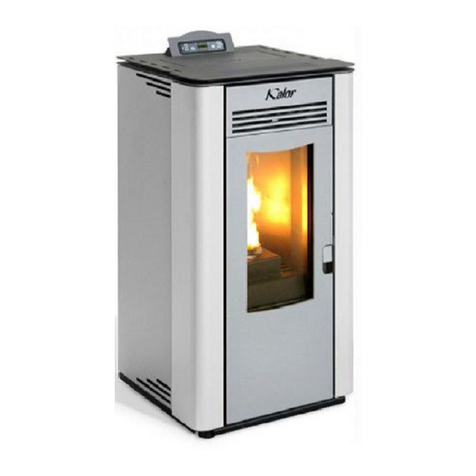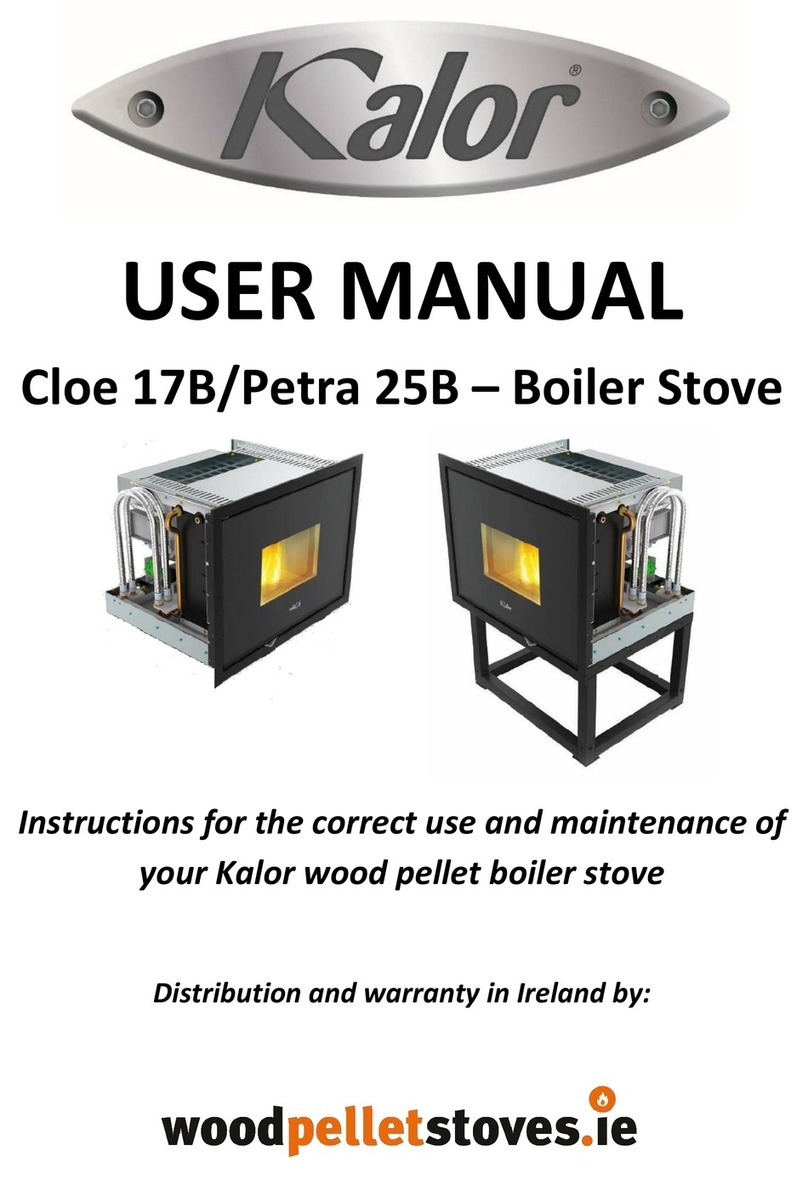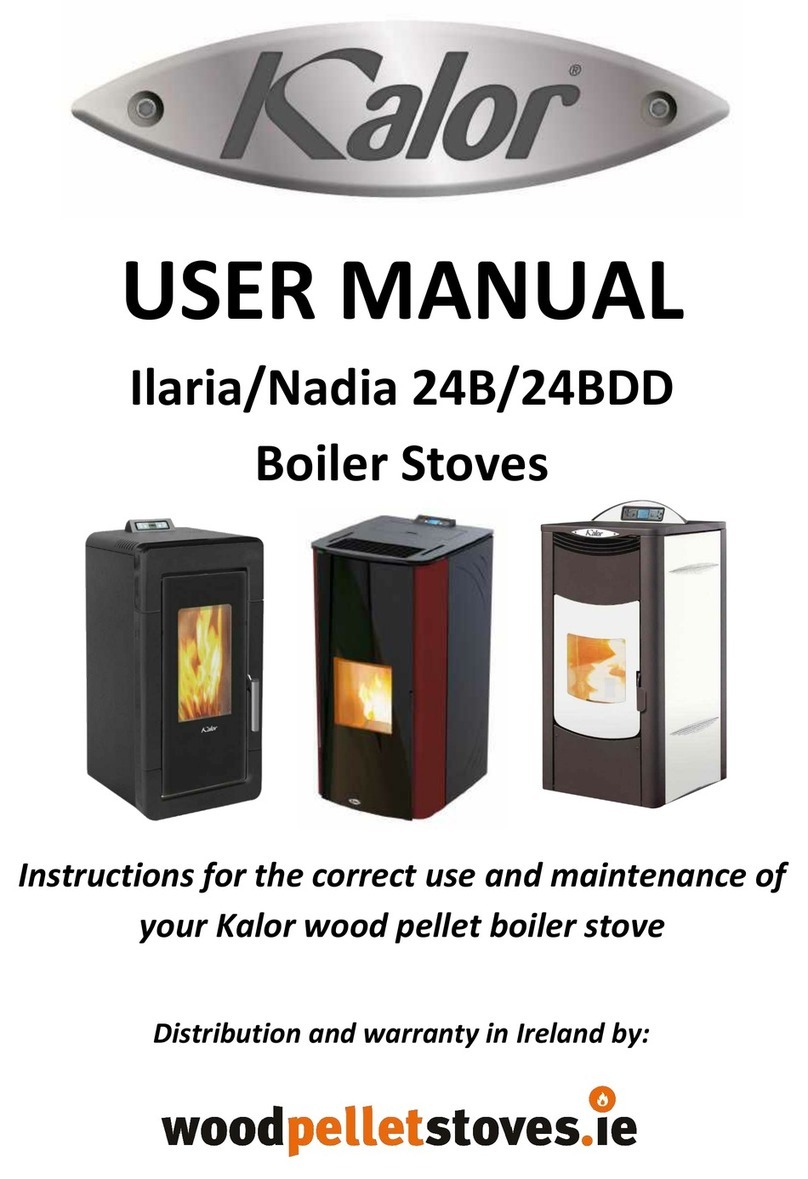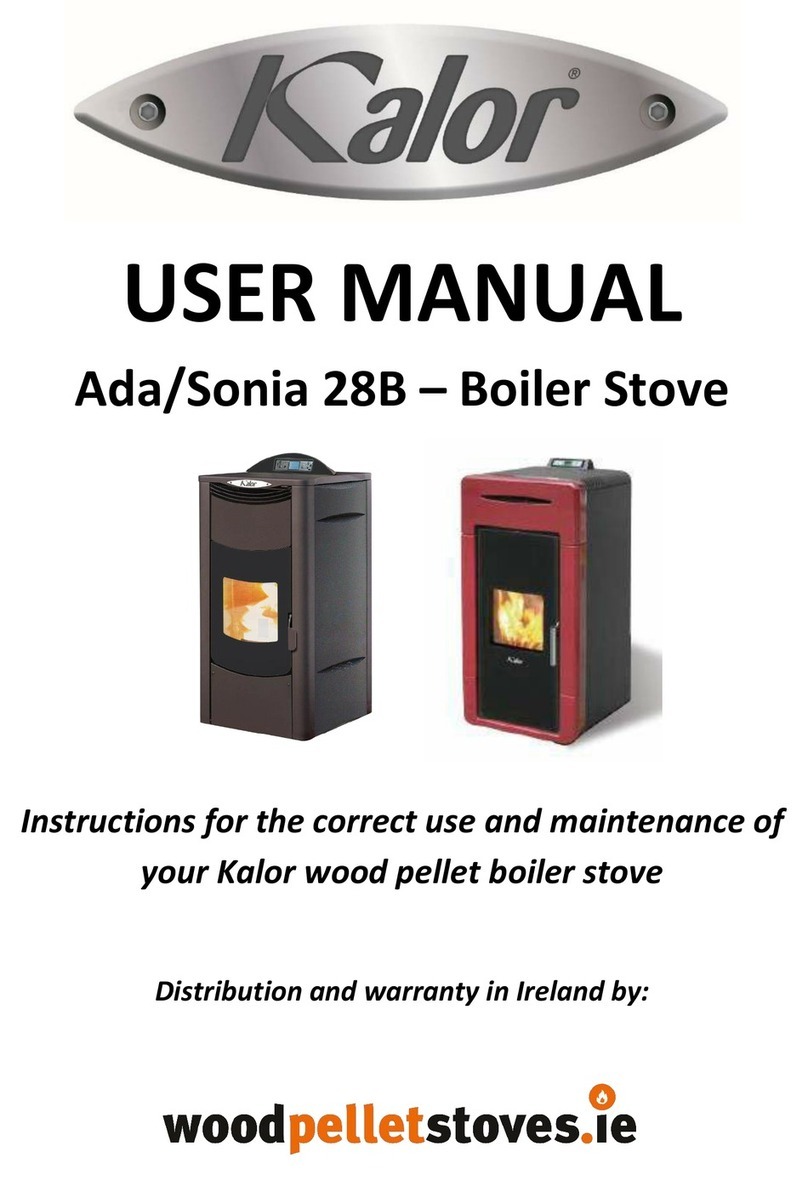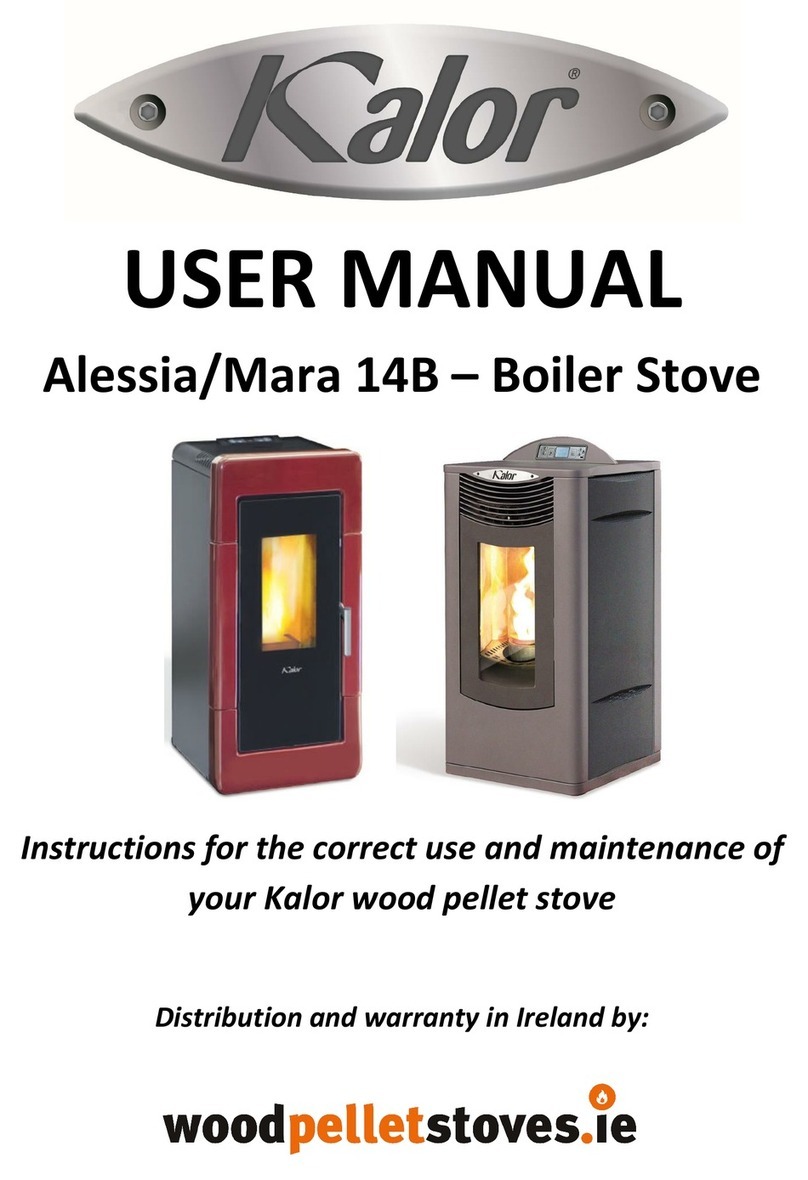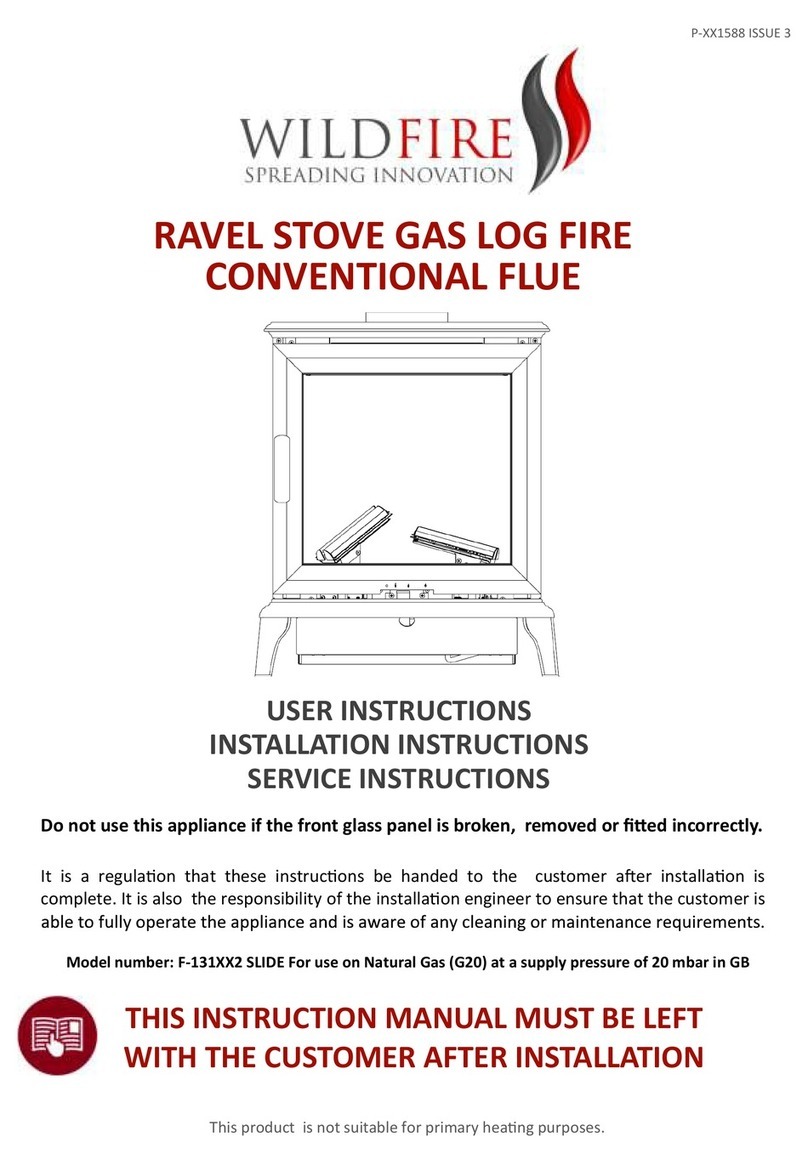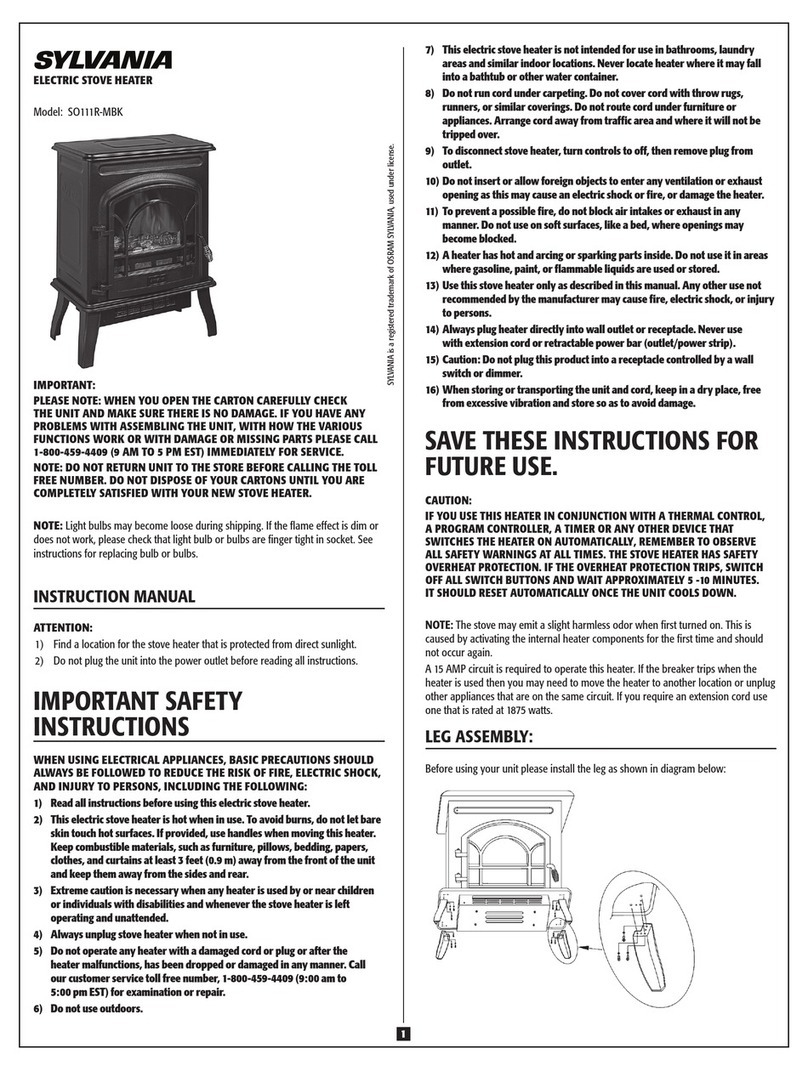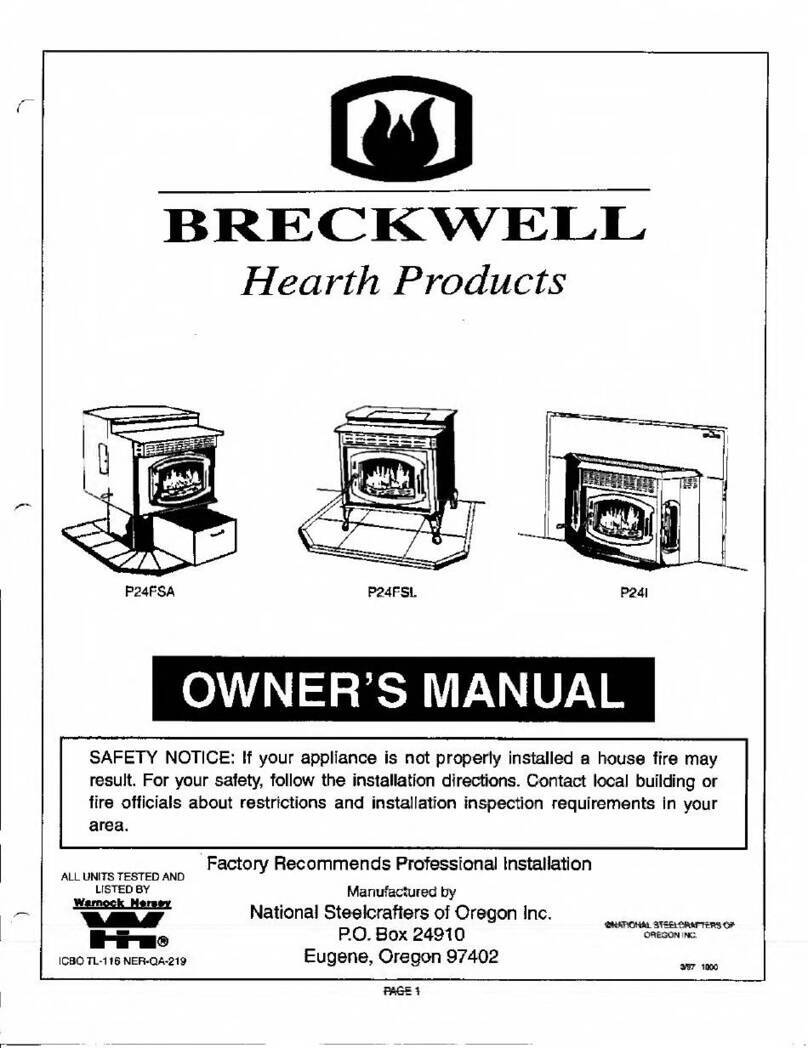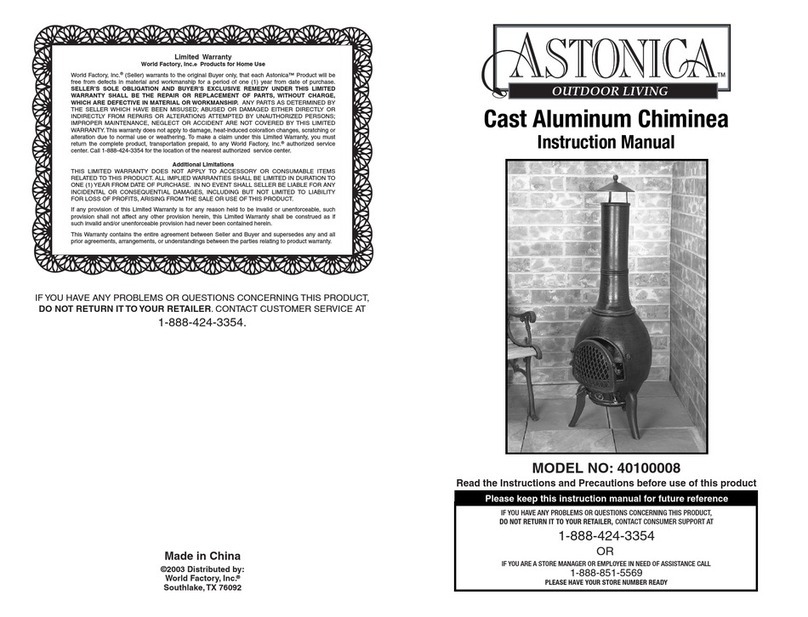30
GB
Our company declares that the stove conforms to the
following norms for the EC European Directive labelling:
• 2014/30 UE (regulation EMCD) and following
amendments;
• 2014/35 UE (Low Voltage Directive) and following
amendments;
• 2011/65 EU (RoHS 2 directive);
• The New Rules of Construction Products (CPR-
Construction Products Regulation) No. 305/2011
regarding the construction world;
• For installations in Italy, please refer to UNI 10683/98
or following changes. For the water-thermo-sanitary
equipment, let the installer give you the conformity
declaration in compliance with L. 37/2008. While
installing the unit respect the local, national and Europen
rules;
• EN 55014-1; EN 55014-2; EN 61000-3-2; EN 61000-3-3;
EN 60335-1; EN 60335-2-102; EN 62233, EN 50581.
Safety information
Please carefully read this use and maintenance manual
before installing and operating the stove!
If clarication is needed, please contact the dealer or the
Authorized Assistance Center.
• The pellet stove must only be operated in living
environments. This stove, being controlled by an
electronic board, permits a completely automatic and
controlled combustion; the exchange, in fact, regulates
the lighting phase, 5 power levels and the shut down
stage, guaranteeing the safe operation of the stove.
• The basket used for combustion allows most of the ash
produced by the combustion of the pellets to fall into
the collection compartment. Nevertheless, check the
basket daily, given that not all pellets have high quality
standards (use only quality pellets recommended by the
manufacturer).
Responsibility
With the delivery of the present manual, we decline all
responsibility, both civil and penal, for accidents deriving
from the partial or total lack of observance of the
instructions contained herein.
We decline every responsibility derived from improper
use of the stove, from incorrect use by the user, from
unauthorized modications and/or repairs, from the use
of replacement parts that are not original for this model.
The manufacturer declines every civil or penal, direct or
indirect responsibility due to:
• Lack of maintenance;
• Failure to observe the instructions contained in the
manual;
• Use in non-conformity with the safety directives;
• Installation in non-conformity with the norms in force in
the country;
• Installation by unqualied or untrained personnel;
• Modications and repairs not authorized by the manu-
facturer;
• Use of non-original replacement parts;
• Exceptional events.
Norms and declarations of conformity
• Use only wood pellets;
• Keep / store the pellets in a cool
dry place;
• Never pour pellets directly on the hearth;
• The stove must be fueled only with quality
pellets with a diameter of 6 mm and a maximum
length of 30 mm of the type recommended by
the manufacturer.
• Before making the electrical connection of the
stove the discharge tubes must be connected
with the flue;
• The protective grill placed inside the pellet
container must never be removed;
• The environment where the stove is installed
must have a sufficient exchange of air;
• It is forbidden to operate the stove with the
door open or the glass broken;
• Do not use the stove as an incinerator; the stove
should be used only for the intended purpose;
• Any other use is considered improper and
therefore dangerous. Do not put in the hopper
other than wood pellets;
• When the stove is operating, the surfaces,
glass, handle and tubes become very hot:
during operation do not touch these parts
without adequate protection;
• Keep the fuel and other inflammable materials
off the stove.
